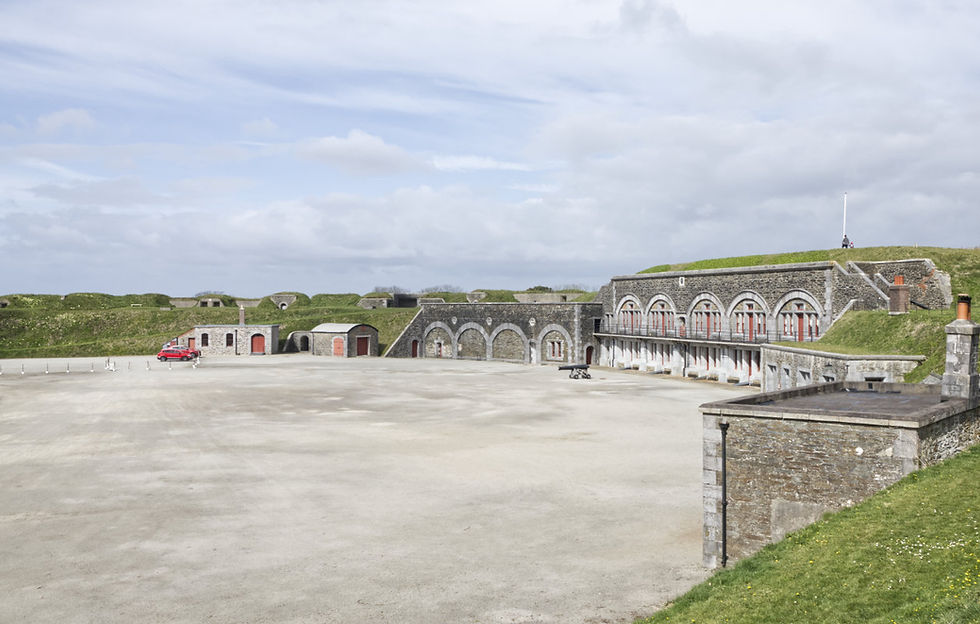Odds and Sods March 2025
- Gethin Thomas

- Apr 8
- 4 min read
These photos are about to prove what a fantastic March we have just had. It started on the 1st March with a few hours on the beach and I even braved the water up to my neck, albeit for only about twenty seconds and some involuntary squeals.
This first batch are from Topsham where I did a photo walk. There will be more to follow in later posts.


On the Strand are some obviously Dutch influenced houses built by 17th century merchants.

William of Orange House is a reminder that when the future King William III landed in
England in 1688 at Brixham, to take the throne with his wife Mary, his baggage, ammunition and stores all came ashore at Topsham Quay.

The town museum is undergoing some major renovations.

The Strand houses have front gardens on the other side of the road which lead down to the Exe estuary.



Boats are everywhere.

Some have seen better days.

Now we move to the river Tamar and another boat that has been under water. I have already published a post from this shore of the Tamar here.



My favourite beach spot, and this cave has appeared, which last year was buried by the beach.

A walk along the Dart at Kingswear and a lucky close up of the steam railway.

The hedgerows are bursting with spring flowers and some, like these primroses, are the best they have been for years.

This is the church in Sherford.

The hill above Sherford on one of the few overcast days. You can just make out the church down below.

These are the church steps.

This is the Huer's Hut on top of Burgh Island.

A short visit to Dawlish, famous for its sea wall and railway built by Brunel. Washed away many times , it has recently been rebuilt. The line cuts the town off from the sea.







Dawlish's other claim to fame are the black swans. The black swan (Cygnus atratus) is a large waterbird, a species of swan which breeds mainly in the southeast and southwest regions of Australia. The Dawlish population is so well associated with the town that the bird has been the town's emblem for forty years.

Interestingly the cygnets are exactly the same colour as those of British White Swans.

Even the public toilets are festooned with Black Swans.

Our timing was wrong for lunch in Dawlish so we carried on to Maidencombe further down the coast to this beautiful little thatched pub.

This is not a cathedral unless you call it a cathedral of defence. This is the ornate granite portal to Crownhill Fort in Plymouth which I will be covering in more detail at a later date.

The interior parade ground exceeds the stage area of the Colosseum in Rome, but as there is no grandstand of seating around it, the fort goes mostly unnoticed by nearly everyone driving past. Most of the structure lies below ground or disguised by banks of earth, grass and trees.

Unlike Plymouth's other forts, this one and nine others formed an impenetrable ring around the city's back door, preventing Napoleon from taking the Devonport dockyards by stealthy invasion further down the coast.

The fort is surrounded by a ditch that is covered from every angle by gun emplacements.

This is a very old bridge outside Topsham. The English Civil War was fought right here.

Next to the bridge is the Bridge Inn. “One of Britain’s most unspoilt pubs.”William John Gibbings from Clyst St. George, moved into the Inn in 1897, and the family has been here ever since. The current licensee is Caroline Cheffers-Heard, his Great Grand-daughter. She is the fourth generation, her daughter Riannon will be the fifth, and grandchildren Amelia and Bea, will be the sixth generation. The Bridge Inn

In early February 1998, a decision was made to fit new carpet throughout the main areas of the Inn. Much jollity ensued, with accusations of the expectation of Royalty visiting being well to the fore. Later Caroline received a confidential phone call, requesting that the Queen would like to visit. Initially we treated it as a joke on account of all the ragging about the new red carpet. It soon became apparent that this was not the case, and very shortly, all manner of folks with clipboards descended on sleepy Topsham. The motorcade swept to a halt outside the inn, and there was Queen Elizabeth II coming to visit our little inn. It was at this moment that you realised that this was for real, and not some strange dream. The Royal Visit.

The Bridge Inn (also known locally as the Pink Pub) is a Grade II listed public house at Bridge Hill, Topsham in the county of Devon, England. Mentioned as a dwelling in Domesday Book, the building was largely constructed in the 18th century of cob and stone, with a 19th-century brick addition. Parts of the present building date from the late 16th century.

The Bridge Inn has been a public house since at least 1797, when it included two dwellings, a quay and a salt refinery. The inn attracted wrestling competitions during the 19th century, and by 1900 there were cattle sales at the site. Wikipedia


Just to finish with some White Swans in the dark.





Comments